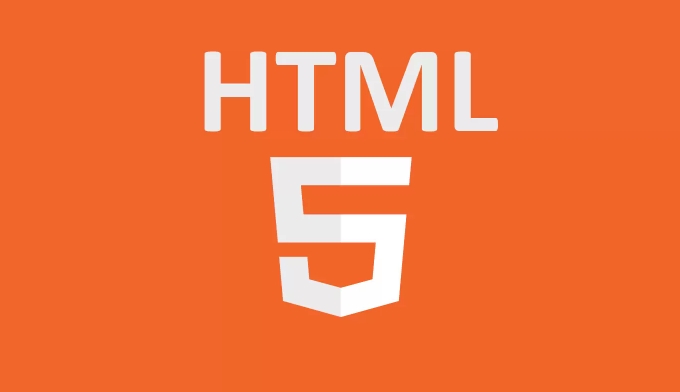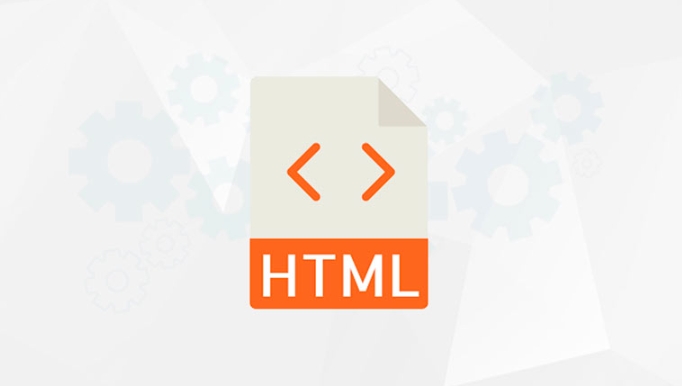How to use srcset for responsive images?
Jul 12, 2025 am 12:50 AMThe key to implementing responsive images in srcset is to understand the syntax and browser selection mechanism. 1. Basic structure: Provide multiple image versions through srcset, and use w descriptors to indicate the width, such as 320w and 480w; 2. Use sizes attribute to define the display size of the image under different screen widths, such as 100vw and 50vw; 3. Use x descriptors to provide high-definition images for high-resolution screens, such as 1x and 2x; 4. The actual suggestions include manually or tools to generate multi-size images, avoiding too many options affecting performance, and setting the alt attribute to ensure accessibility.

It is actually not difficult to use srcset to implement responsive images. The key is to understand its syntax and how the browser chooses the right image resource.

1. Basic structure: Tell the browser what pictures are available
The core of srcset is to provide multiple image versions, allowing the browser to automatically select the most suitable image based on the device's pixel density or viewport width. The basic writing method is as follows:
<img src="/static/imghw/default1.png" data-src="image.jpg" class="lazy"
srcset="image-320w.jpg 320w,
image-480w.jpg 480w,
image-800w.jpg 800w"
sizes="..."
alt="Responsive image"> Each image is followed by a width descriptor (such as 320w ), telling the browser how many pixels the width of this image is. Note that the unit is lowercase w , not px.

2. Cooperate with sizes attribute: defines the actual size of the image displayed on the page
sizes is a partner of srcset , which tells the browser how big the image will be at different screen widths. It is a combination of a set of media queries and size values, with the format:
sizes="(max-width: 600px) 100vw,
(max-width: 900px) 50vw,
33vw"This code means:

- When the screen width is less than or equal to 600px, the image takes up the entire viewport width (100vw)
- Between 601px and 900px, the image takes up half the width (50vw)
- After exceeding 900px, the image accounts for one-third of its width (33vw)
With this information, the browser can select the most suitable picture based on factors such as device pixel ratio and viewport size.
3. Use x descriptor to deal with high resolution screens
In addition to the w descriptor, you can also use x descriptor to provide higher-definition pictures for screens with different pixel densities:
srcset="image.jpg 1x,
image-2x.jpg 2x"This writing method is suitable for icons or pictures displayed in small sizes, such as avatars, buttons, etc. But note that this method does not take into account the viewport width, and only selects the picture based on the device pixel ratio.
4. Practical suggestions: How to prepare picture resources?
Before using srcset , you need to prepare pictures of multiple sizes. Can:
- Manually crop compression, or
- Automatically generate using build tools (such as Webpack, Gulp)
- Or dynamically generate different sizes with cloud services (such as Cloudinary, Imgix)
The recommended method is to prepare pictures for common breakpoints, such as 320px, 768px, 1024px, 1440px, etc. At the same time, be careful not to provide too many options to avoid affecting load performance.
In addition, don't forget to set the alt attribute to ensure barrier-free access.
Basically that's it. Mastering the combination of srcset and sizes can make the pictures clear and without wasting bandwidth on various devices.
The above is the detailed content of How to use srcset for responsive images?. For more information, please follow other related articles on the PHP Chinese website!

Hot AI Tools

Undress AI Tool
Undress images for free

Undresser.AI Undress
AI-powered app for creating realistic nude photos

AI Clothes Remover
Online AI tool for removing clothes from photos.

Clothoff.io
AI clothes remover

Video Face Swap
Swap faces in any video effortlessly with our completely free AI face swap tool!

Hot Article

Hot Tools

Notepad++7.3.1
Easy-to-use and free code editor

SublimeText3 Chinese version
Chinese version, very easy to use

Zend Studio 13.0.1
Powerful PHP integrated development environment

Dreamweaver CS6
Visual web development tools

SublimeText3 Mac version
God-level code editing software (SublimeText3)

Hot Topics
 CSS Positions layout method to implement responsive image layout
Sep 26, 2023 pm 01:37 PM
CSS Positions layout method to implement responsive image layout
Sep 26, 2023 pm 01:37 PM
CSSPositions layout method to implement responsive image layout In modern web development, responsive design has become an essential skill. In responsive design, image layout is one of the important considerations. This article will introduce how to use CSSPositions layout to implement responsive image layout and provide specific code examples. CSSPositions is a layout method of CSS that allows us to position elements arbitrarily in the web page as needed. In responsive image layout,
 How to implement responsive image and multimedia management under Vue?
Jun 27, 2023 am 08:06 AM
How to implement responsive image and multimedia management under Vue?
Jun 27, 2023 am 08:06 AM
With the development of the Internet, images and multimedia resources have become an important part of websites and applications. How to implement responsive image and multimedia management in a Vue project? This article will introduce some methods and techniques. Using Components Components in Vue are a very powerful tool for dividing your UI organizational structure into reusable modules. Components can pass data through props and events, which makes components very flexible. When dealing with images and multimedia resources, we can create a component to manage them. this group
 Implementing Responsive Images using HTML Picture Element
Jul 10, 2025 pm 01:07 PM
Implementing Responsive Images using HTML Picture Element
Jul 10, 2025 pm 01:07 PM
Elements are a native way to implement responsive images in HTML5. It allows the most appropriate image resources to be loaded according to factors such as the screen size, resolution, and direction of the device. Define multiple image sources and their corresponding media query conditions through tags. The browser will match and load pictures that meet the conditions in order, and finally use the tag as the default fallback. For example: when the device width is greater than or equal to 1024px, medium.jpg is loaded between 768 and 1023px, small.jpg is loaded if the device width is greater than or equal to 1024px. Compared with srcset, it provides more refined control capabilities, such as adapting to Retina screens, horizontal and vertical screen switching, completely different picture content, etc. Media checks should be set reasonably when using
 How does the srcset attribute help with responsive images in html?
Jul 07, 2025 am 12:26 AM
How does the srcset attribute help with responsive images in html?
Jul 07, 2025 am 12:26 AM
srcset is an attribute of tags in HTML that defines multiple image sources, allowing the browser to select the most appropriate image based on the device's screen size and resolution. 1. It improves page loading speed and user experience, avoiding unnecessary large image downloads or blurred displays. 2. Use the w descriptor to specify the image width. Combined with the sizes attribute, the browser can select the best image according to the layout width. 3. A pixel density descriptor such as 2x can be used to provide a clearer image for high-resolution screens. 4. When using it, src should be included as a fallback, and ensure that the image size is accurate and optimized well. Cross-device testing should be carried out to ensure the effect.
 How to create responsive images using CSS?
Jul 15, 2025 am 01:10 AM
How to create responsive images using CSS?
Jul 15, 2025 am 01:10 AM
To create responsive images using CSS, it can be mainly achieved through the following methods: 1. Use max-width:100% and height:auto to allow the image to adapt to the container width while maintaining the proportion; 2. Use HTML's srcset and sizes attributes to intelligently load the image sources adapted to different screens; 3. Use object-fit and object-position to control image cropping and focus display. Together, these methods ensure that the images are presented clearly and beautifully on different devices.
 Implementing Responsive Images with the HTML srcset and sizes Attributes
Jul 12, 2025 am 12:15 AM
Implementing Responsive Images with the HTML srcset and sizes Attributes
Jul 12, 2025 am 12:15 AM
srcset and sizes are key properties for HTML implementation of responsive images. srcset provides multiple image sources and their width or pixel density, such as 400w and 800w, and the browser selects the appropriate image accordingly; sizes defines the display width of the image under different screen widths, such as (max-width: 600px)100vw, 50vw, so that the browser can more accurately match the image size. In actual use, you need to prepare multi-size pictures, clearly named, design layout in accordance with media query, and test the performance of the equipment to avoid ignoring sizes or unit errors, thereby saving bandwidth and improving performance.
 How to use srcset for responsive images?
Jul 12, 2025 am 12:50 AM
How to use srcset for responsive images?
Jul 12, 2025 am 12:50 AM
The key to implementing responsive images in srcset is to understand the syntax and browser selection mechanism. 1. Basic structure: Provide multiple image versions through srcset, and use w descriptors to indicate the width, such as 320w and 480w; 2. Use sizes attribute to define the display size of the image under different screen widths, such as 100vw and 50vw; 3. Use x descriptors to provide high-definition images for high-resolution screens, such as 1x and 2x; 4. The actual suggestions include manually or tools to generate multi-size images, avoiding too many options affecting performance, and setting the alt attribute to ensure accessibility.
 How do I make responsive images with HTML tags?
Jun 27, 2025 am 12:30 AM
How do I make responsive images with HTML tags?
Jun 27, 2025 am 12:30 AM
TomakeresponsiveimagesusingHTML,combineproperHTMLattributeswithbasicCSS.Startbyusingthetagwithsrc,alt,andwidthtoensureaccessibilityandpreventlayoutshifts.Avoidsettingbothwidthandheightunlesstheymatchtheimage'saspectratio.Next,addsrcsetandsizesattribu






